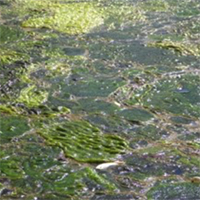Sediment phosphorus release sustains nuisance periphyton growth when nitrogen is not limiting
Sediment phosphorus sustains nuisance periphyton

Submitted: 30 April 2019
Accepted: 27 March 2020
Published: 3 April 2020
Accepted: 27 March 2020
Abstract Views: 1470
PDF: 480
HTML: 7
HTML: 7
Publisher's note
All claims expressed in this article are solely those of the authors and do not necessarily represent those of their affiliated organizations, or those of the publisher, the editors and the reviewers. Any product that may be evaluated in this article or claim that may be made by its manufacturer is not guaranteed or endorsed by the publisher.
All claims expressed in this article are solely those of the authors and do not necessarily represent those of their affiliated organizations, or those of the publisher, the editors and the reviewers. Any product that may be evaluated in this article or claim that may be made by its manufacturer is not guaranteed or endorsed by the publisher.
Similar Articles
- Ning Chen, Ling Liu, Yanfeng Li, Danying Qiao, Yuanpo Li, Ying Zhang, Yiyan Lv, Morphology-based classification of functional groups for potamoplankton , Journal of Limnology: Vol. 74 No. 3 (2015)
- Alma R. Núñez-Ortiz, Sarma Nandini, S.S.S. Nandini, Demography and feeding behavior of Stenostomum leucops (Dugés, 1828) , Journal of Limnology: Vol. 75 No. s1 (2016): Proceedings of the 6th National Congress of Limnology
- Bouke Biemond, Marina Amadori, Marco Toffolon, Sebastiano Piccolroaz, Hans van Haren, Henk A. Dijkstra, Deep-mixing and deep-cooling events in Lake Garda: Simulation and mechanisms , Journal of Limnology: Vol. 80 No. 2 (2021)
- Shengxing Long, Paul B. Hamilton, Yang Yang, Jianrong Ma, Ondhoro C. Chobet, Chuan Chen, Anzhi Dang, Zhiwei Liu, Xian Dong, Jiangan Chen, Multi-year succession of cyanobacteria blooms in a highland reservoir with changing nutrient status, Guizhou Province, China , Journal of Limnology: Vol. 77 No. 2 (2018)
- Edyta Buczyńska, Stanisław Czachorowski, Paweł Buczyński, Joanna Pakulnicka, Edyta Stępień, Agnieszka Szlauer-Łukaszewska, Robert Stryjecki, Andrzej Zawal, Environmental heterogeneity at different scales: key factors affecting caddisfly larvae assemblages in standing waters within a lowland river catchment , Journal of Limnology: Vol. 76 No. 2 (2017)
- Muhammed Shikhani, Chenxi Mi, Artur Gevorgyan, Gor Gevorgyan, Amalya Misakyan, Levon Azizyan, Klemens Barfus, Martin Schulze, Tom Shatwell, Karsten Rinke, Simulating thermal dynamics of the largest lake in the Caucasus region: The mountain Lake Sevan , Journal of Limnology: Vol. 81 No. s1 (2022): Lake Sevan. Past, present, and future state of a unique alpine lake
- Irina P. Chubarenko, Elena Esiukova, Natalia Stepanova, Boris Chubarenko, Henning Baudler, Down-slope cascading modulated by day/night variations of solar heating , Journal of Limnology: Vol. 72 No. 2 (2013)
- Elisa Falasco, Francesca Bona, Recent findings regarding non-native or poorly known diatom taxa in north-western Italian rivers , Journal of Limnology: Vol. 72 No. 1 (2013)
- Maria Belen Sathicq, Tomasa Sbaffi, Giulia Borgomaneiro, Andrea Di Cesare, Raffaella Sabatino, The meiofauna as neglected carriers of antibiotic resistant and pathogenic bacteria in freshwater ecosystems , Journal of Limnology: Vol. 80 No. 3 (2021): Celebratory Issue - 80th Anniversary of the Journal of Limnology
- Xu Sun, Zhixin Hu, Wen Jia, Cuilan Duan, Liuyan Yang, Decaying cyanobacteria decrease N2O emissions related to diversity of intestinal denitrifiers of Chironomus plumosus , Journal of Limnology: Vol. 74 No. 2 (2015)
<< < 9 10 11 12 13 14 15 16 17 18 > >>
You may also start an advanced similarity search for this article.

 https://doi.org/10.4081/jlimnol.2020.1913
https://doi.org/10.4081/jlimnol.2020.1913





